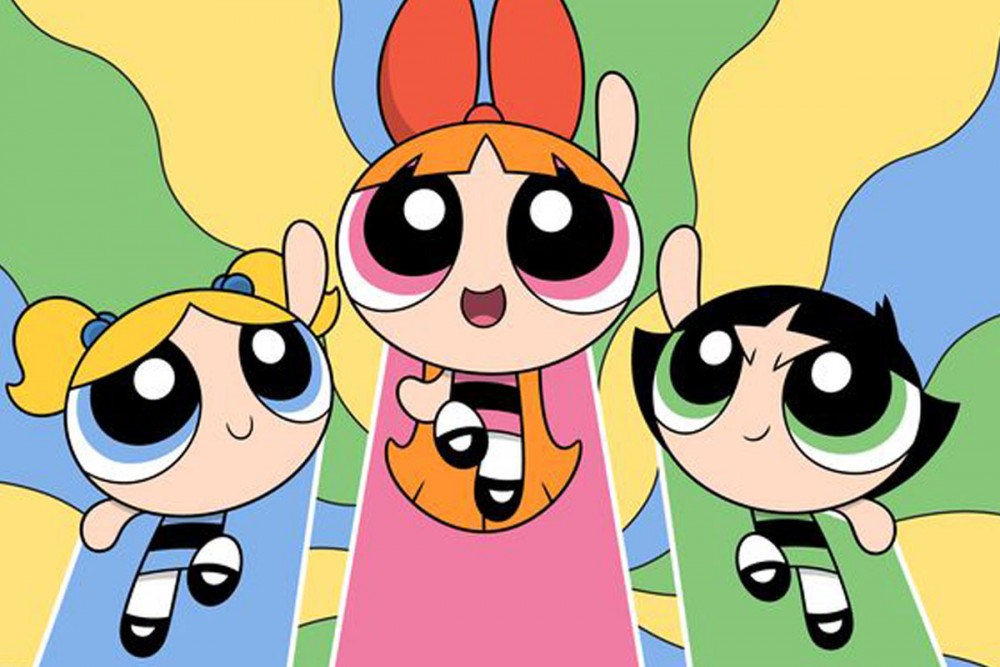From its creation to Blue Rinses and eyelids, we unpack the significance of the colour Blue in pop culture

Yves Klein
By Tara Young
Each season comes with a statement colour and for summer, it's been Blue. Removing the rose-tinted glasses and looking passed millennial pink and its hot sister, Barbie pink, Blue quietly crept in and washed over us. Dominating our lives and our feeds with oceanic trends like mermaid core and smeared over eyelids for a dreamy blue-hue, Sad Girl mood or the 90s hyper femme revival that sees PJ Harvey on stage with messy jet-black hair, red lips and blue eye shadow.
Pops of blue have been showing up everywhere and while it's nothing new, it may seem like a bold move in our hair or around our eyes. The allure of wearing Blue actually makes sense, it is complementary to skin tone. It's on the opposite side of the colour wheel from brown, tan and peach resulting in a high contrast that looks good on everyone.
Blue is often found at the edges and depths of nature, the pale blue of a sunny sky is deep, dreamy and melancholic, and the rich dark blue of a deep pool of water could be described as pure, calm and serene. Yet as a cool colour, blue can sometimes seem icy, distant, or even cold. (cont. below)
Line your bathroom shelf in blue:

Blue pigments have a rich history of scientific invention, global trade, and artistic workarounds. The first synthetic pigment created was Egyptian Blue in 2,200 B.C and from then more emerged; Ultramarine or 'True Blue' was made from the semiprecious gemstone lapis lazuli, and Indigo (a natural dye) became an affordable option for dying textiles. Many famous artworks feature Cobalt Blue and Cerulean because Ultramarine was so expensive, and later in 1960, International Klein Blue which is a matte version of Ultramarine was created by Yves Klein. The most recent discovery was YInMn Blue in 2009.
Predominantly favoured in art, ceramics and jewellery, it was in Paris during the 1930s that hairstylists began experimenting with unnatural colours. The 'Old Lady Blue Rinse' was popularized by Jean Harlow after her performance in Hells Angels (1930) where her platinum blonde hair took on a glossy silver sheen. That blue chemical solution became the secret to achieving a silvery shimmer, the perfect disguise for brassy or grey hair. Before a time of colour-tinted shampoo, I remember finding bottles of silvery blue and pink colour rinses at a chemist, around the early 2000s, and using it to tint my bleached hair. Genius.
During the Middle Ages, makeup was associated with vanity and immorality, and its use declined in many parts of the world. However, blue eyeshadow experienced a renaissance during the Renaissance period, especially among the upper classes since blue paint was so expensive to create. It wasn't until the 1950s and 60s, with the debut of Barbie in ice-blue eye shadow, followed by Elizabeth Taylor's ultramarine from brows to lashes phenomenon in Cleopatra in 1963, that Blue eyeshadow took hold. Equally seductive and subversive, blue eye shadow is emblematic of the colour Blue's expressive past.
Scroll through for the most iconic moments of blue hair and eyeshadow in fashion, on screen and on stage over the years.
ON SCREEN

Cleopatra, 1963

Dorothy, Blue Velvet

Sally Bowles, Cabaret

Brian Slade in Velvet Goldmine, 1998

Divine in Pink Flamingos

Layla in Buffalo '66

Emma in Blue is the Warmest Colour, 2013

From the dark blue depths of the North Atlantic Ocean, Kate Winslet as Clementine Kruczynski in Eternal Sunshine of the Spotless Mind, 2004

Elaine Parks in Love Witch, 2016

Suzy Bishop in Moonrise Kingdom, 2012

Bugs in The Matrix Resurrections, 2021

I, Tonya, 2017

Maddy Perez in Euphoria

Maxine, X
ON STAGE

PJ Harvey performs at Glastonbury Music Festival, 1995


Lil Kim

Gwen Steffani

Billie Eilish
IN FASHION

Kate Moss backstage at Gucci, 1996

Marc Jacobs, Spring 2019

Schiaparelli Couture AW23

Makeup by Pat McGrath for Maison Margiela

Hair by Phillippa Hoffman for Meadowlark, 2023










